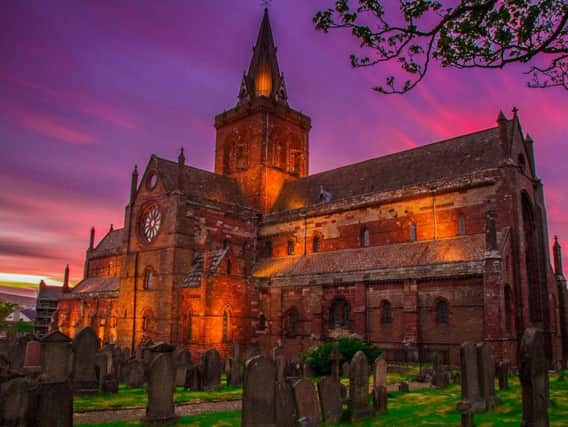Lost buildings of mighty island cathedral found during roadworks


The 16th Century buildings were part of the St Magnus Cathedral Close, which featured a number of large buildings where pilgrims were welcomed and ecclesiastic staff housed.
Archaeologists have now uncovered a series of walls, pottery and animal bones with some items found just inches under the surface of the road at Victoria Street.
Advertisement
Hide AdAdvertisement
Hide Ad"To see the physical evidence of cathedral precinct structures so close to the surface of Broad Street is very exciting and reminds us of the importance of Kirkwall being at the centre of the Cult of St Magnus in the medieval period.
Archaeologists believe the remains are those of Chaplain’s Chamber and Sub-Deans Manse, which were demolished in the 1930’s to make way for a car park and to allow vehicle access to Victoria Street.
The Cathedral Precinct once covered a site that stretches from Kirkwall Community Centre to the top of Victoria Street and up to the Bishop’s Palace.
Although there would have been earlier buildings to house Cathedral staff most of the buildings, including the Chaplain’s chamber and Sub-dean’s Manse, were built under Bishop Robert Reid as part of a grand piece of town planning in the 1540s shortly after he became bishop of Orkney.
At this time Orkney and the rest of Scotland were still predominantly Roman Catholic and the cathedral was a Catholic cathedral.
Along with the construction of the Cathedral precinct, Bishop Reid also built the Moosie Tower and rebuilt St Olaf’s Kirk of which the archway in Olaf’s Wynd is a part.
Several of the precinct buildings still existing today, including the old grammar school. The Sub-chantry, Arch-deanery and residence of the chancellor form part of The Orkney Museum.
The archaeology has now been recorded and the site carefully covered over to preserve for future generations.
Advertisement
Hide AdAdvertisement
Hide AdKirkwall took over from Birsay as the chief powerbase for the Orkney earls in the 12th century and grew in importance when Rognvald Kali Kolsson (c1103-1158) became Earl in 1136.
Kolsson made an incredible mark on this coastal town when he decided to build a cathedral to commemorate his uncle, Saint Magnus.
